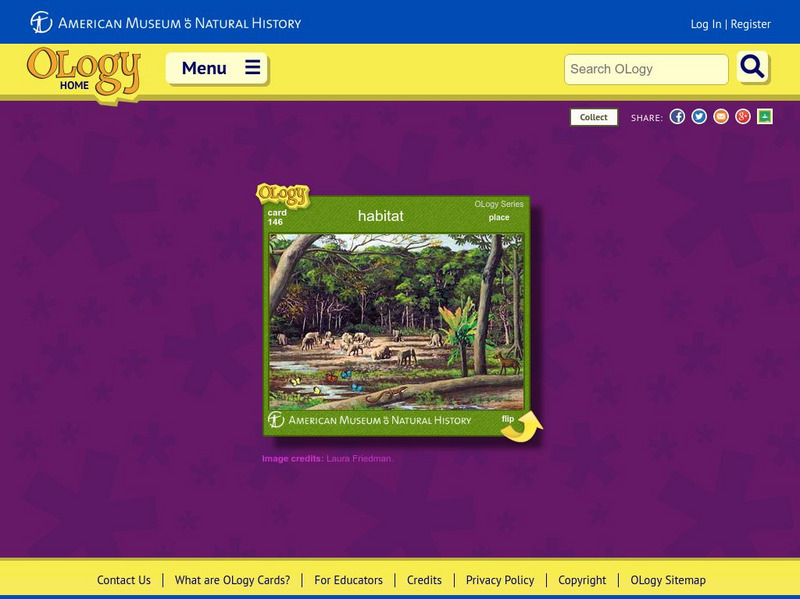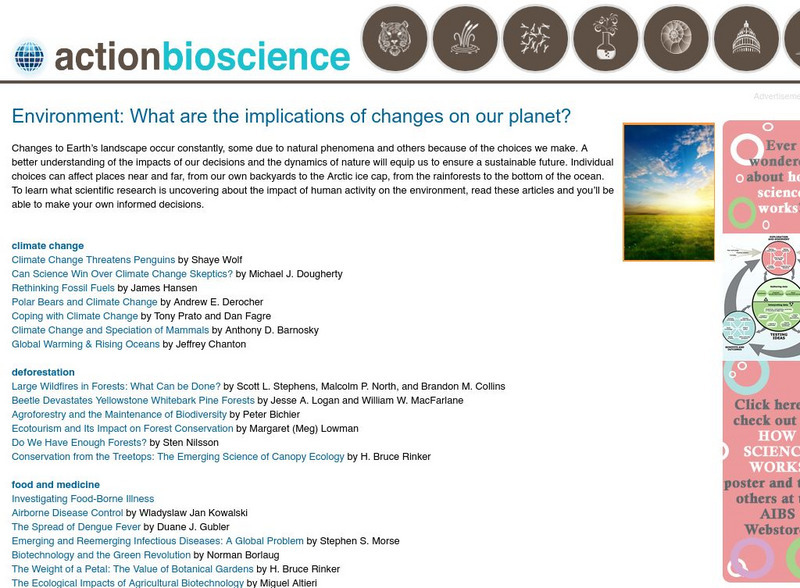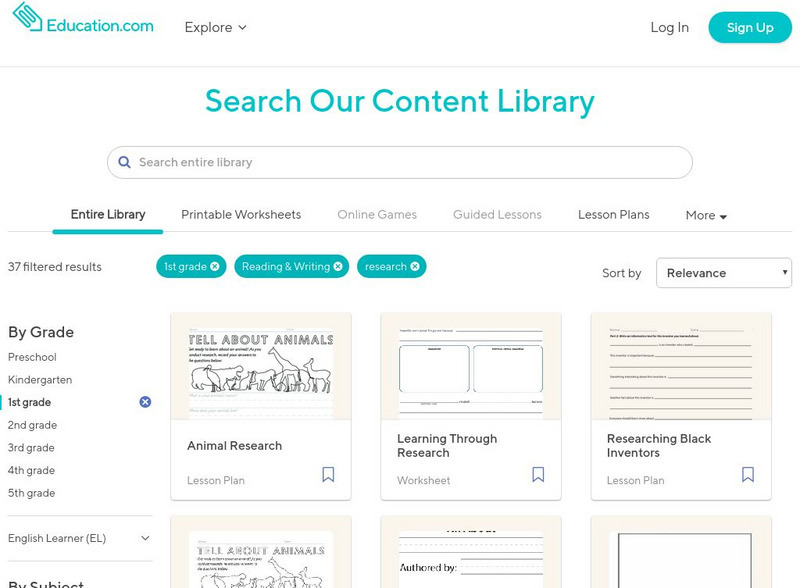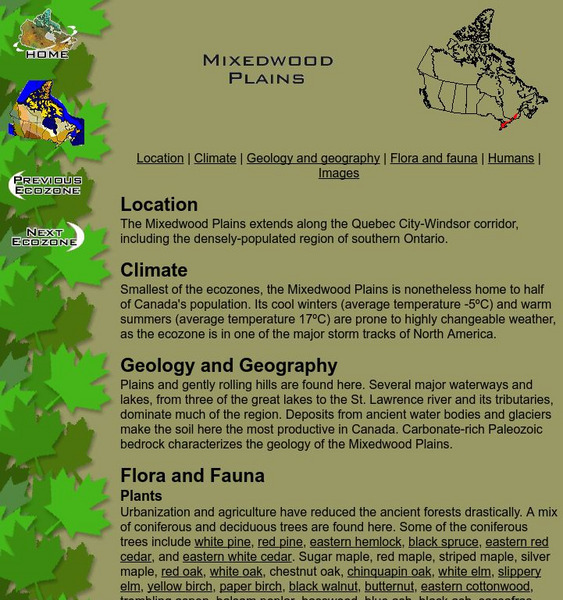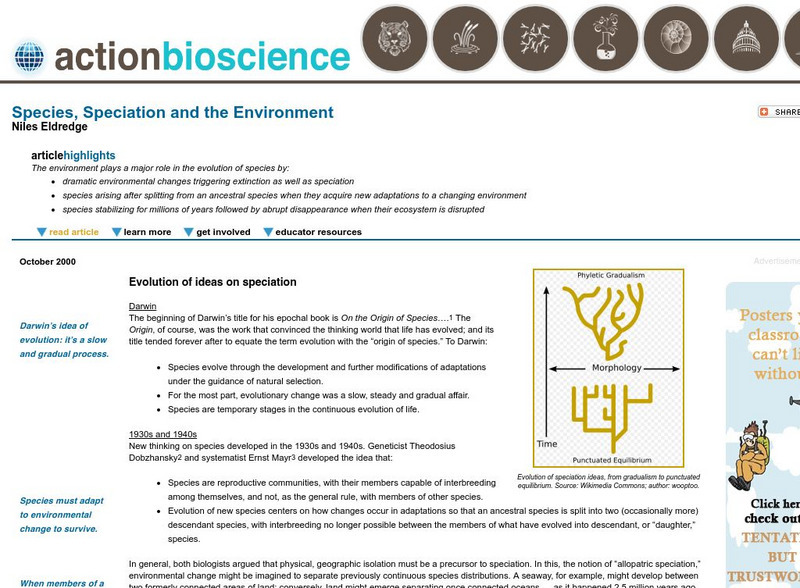Hi, what do you want to do?
PBS
Pbs Kids: Plum Landing: Invaders!
This bustling game is a race to help Plum eliminate introduced or invasive species before they crowd out the native populations.
PBS
Pbs Kids: Plum Landing: Map Animal Habitats
In this Plum Landing activity, students will write or draw descriptions of where animals live in their neighborhoods. Students can publish their descriptions online.
Other
Brooklyn Expedition: Structures
If you've ever wondered how animals use their homes or what we are made of, this is the place to look. This site from the Brooklyn Children's Museum explores the shared characteristics among animal skeletons and homes, architecture, art...
American Museum of Natural History
American Museum of Natural History: Habitat O Logy Card
Flip this interactive OLogy card to find fast facts, questions and answers, and other bite-size pieces of information about the meaning of habitat, as a scientific concept, and learn why habitat is so important to plants and animals.
Government of Canada
Government of Canada: Environment: Ecosystem Initiatives
This resource provides information on ecosystem initiatives and the programs in Canada that are working to preserve area ecosystems.
Other
Rainforest Alliance: Species Profiles
This resource has rain-forest species profiles for amphibians, birds, mammals, insects, and plants. Each profile explains the organism's anatomy, habitat, diet, and threats.
Missouri Botanical Garden
Missouri Botanical Garden: Biology of Plants: Plant Adaptations
Read about how plants adapt to survive in different biomes. Includes a song, game, photos, and lesson plans.
American Institute of Biological Sciences
Action Bioscience: Issues in Environment
This site from American Institute of Biological Sciences provides a collection of articles on current issues in environmental science and human impacts on the environment. Several articles available in Spanish.
World Wildlife Fund for Nature
World Wildlife Fund Russia
This resource provides bilingual news and facts about wildlife issues and projects across Russia. A small collection of beautiful images and video clips. Special section for kids with puzzles and nature-related games such as Rescue the...
Education.com
Education.com: 1st Grade Reading & Writing Resources
[Free Registration/Login Required] This collection of first grade reading and writing resources contains lesson plans and worksheets that can be used during the research process.
McGill University
Mc Gill University: Canadian Biodiversity: Ecozones: Mixedwood Plains
This Mixedwood Plains ecozone extends along the Quebec City- Windsor corridor and the densely-populated region of Southern Ontario. This brief, concise description includes a collection of images of the animals and birds native to the...
Other
Covington Independent Public Schools: A Worm Farm
Students will observe firsthand that worms change organic waste into soil. Directions and a cut/paste worksheet are included in this lesson.
Other
The Rspb: A to Z of a Wildlife Garden
Learn the steps to making a good wildlife garden that attracts all types of wildlife.
Alabama Learning Exchange
Alex: Habitats
What is a habitat? In this activity, students will identify that a habitat has four elements, food, water, shelter, and space. Students will identify their own habitat and create a brochure describing the habitat in terms of food, water,...
Alabama Learning Exchange
Alex: Pretty Cool Penguins
This lesson is part of an interdisciplinary primary life science unit addressing adaptation and habitats by focusing on penguins. This lesson is primarily technology based and should take place near the end of the unit, after students...
Alabama Learning Exchange
Alex: Creature Comforts
What do living things need to survive? In this unit, learners explore different habitats and the adaptations made by living things to survive. Students will create a website matching an animal's adaptations to its environment. Then, they...
Alabama Learning Exchange
Alex: Envision, Enhance, Enjoy
In this lesson plan from "The Friends of Auntie Litter", (www.auntielitter.org), habitats will be explored. Students will also create bird houses. This lesson plan is one from the "Take Pride Statewide" series. *This lesson plan is...
US Department of Agriculture
U.s. Department of Agriculture: Biodiversity Experiment
Try this experiment around your yard or school and see how biodiversity at the plant level affects biodiversity at the insect level.
American Institute of Biological Sciences
Action Bioscience: Species, Speciation and the Environment
The American Institute of Biological Sciences offers this article by Niles Eldredge, evolutionary theorist and curator at the American Museum of Natural History. Eldredge begins with Darwin's theories and summarizes subsequent thought,...
California State University
Cardboard Tree and Endangered Animals Lesson
Two short art lessons in one that introduce young learners to the idea of extinct animals and habitats. Each student will be creating and painting a habitat and assembling an owl. This could be adaptable to use the extinct animal of your...
Environmental Education for Kids
Eek!: Habitats
Take a look at some of the different habitats that are home to many plants and animals including black bears, owls and various species of birds.
Michigan Reach Out
Bottle Habitat
Students create and observe an aquatic habitat. After recording observation students graph the changes.
abcteach
Abcteach: Ponds
[Free Registration/Login Required] The abcteach directory contains sample pages from their pond unit for non-members. Handouts are in PDF format.
PBS
Pbs Teachers:levels of Life: Interrelationships in the Rainforest
Research a plant or animal from the rainforest, identify its physical location within the rainforest and contribute information about that organism to a group project on rainforest habitats.








